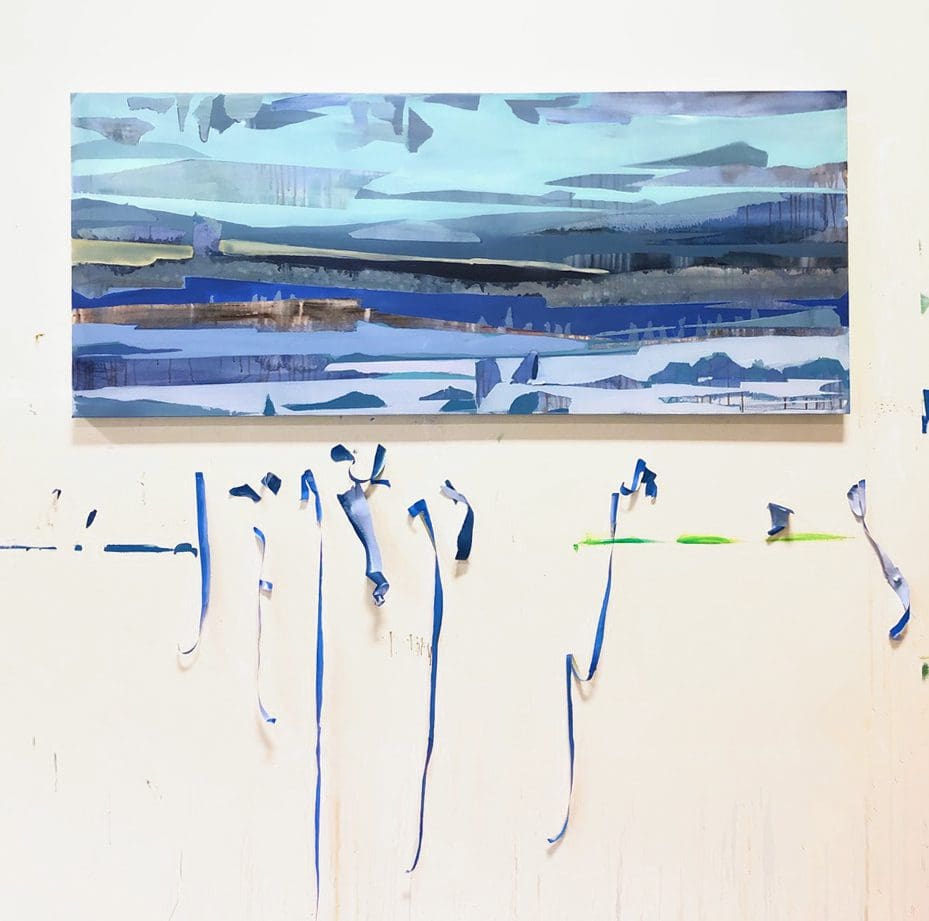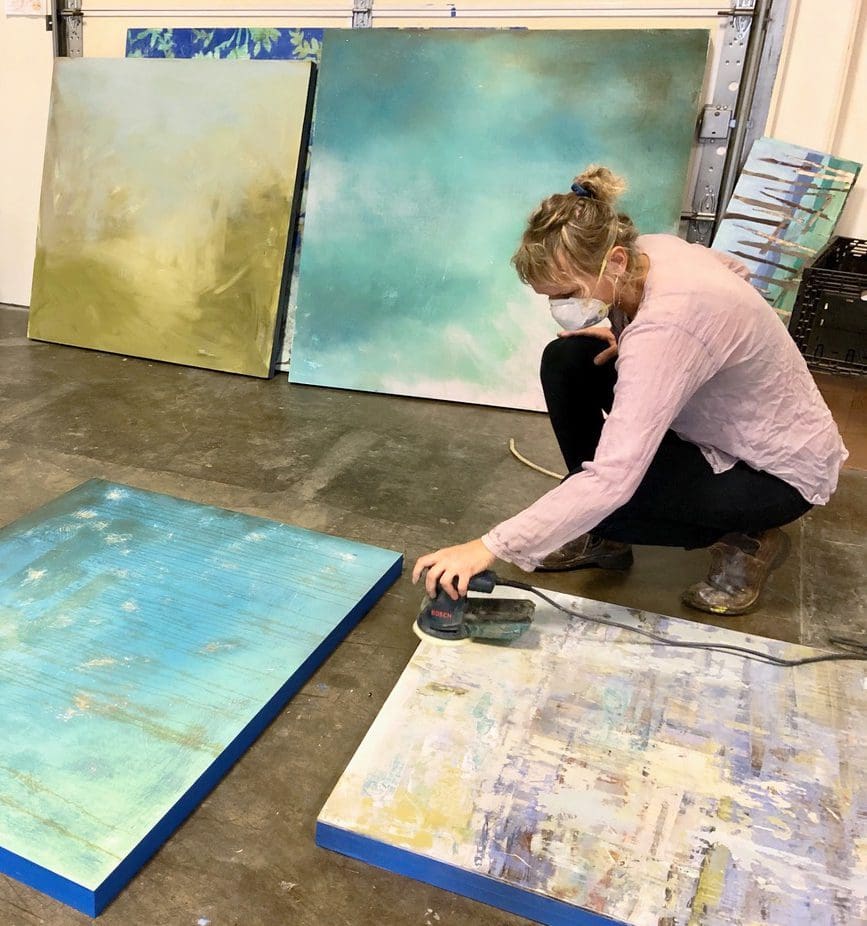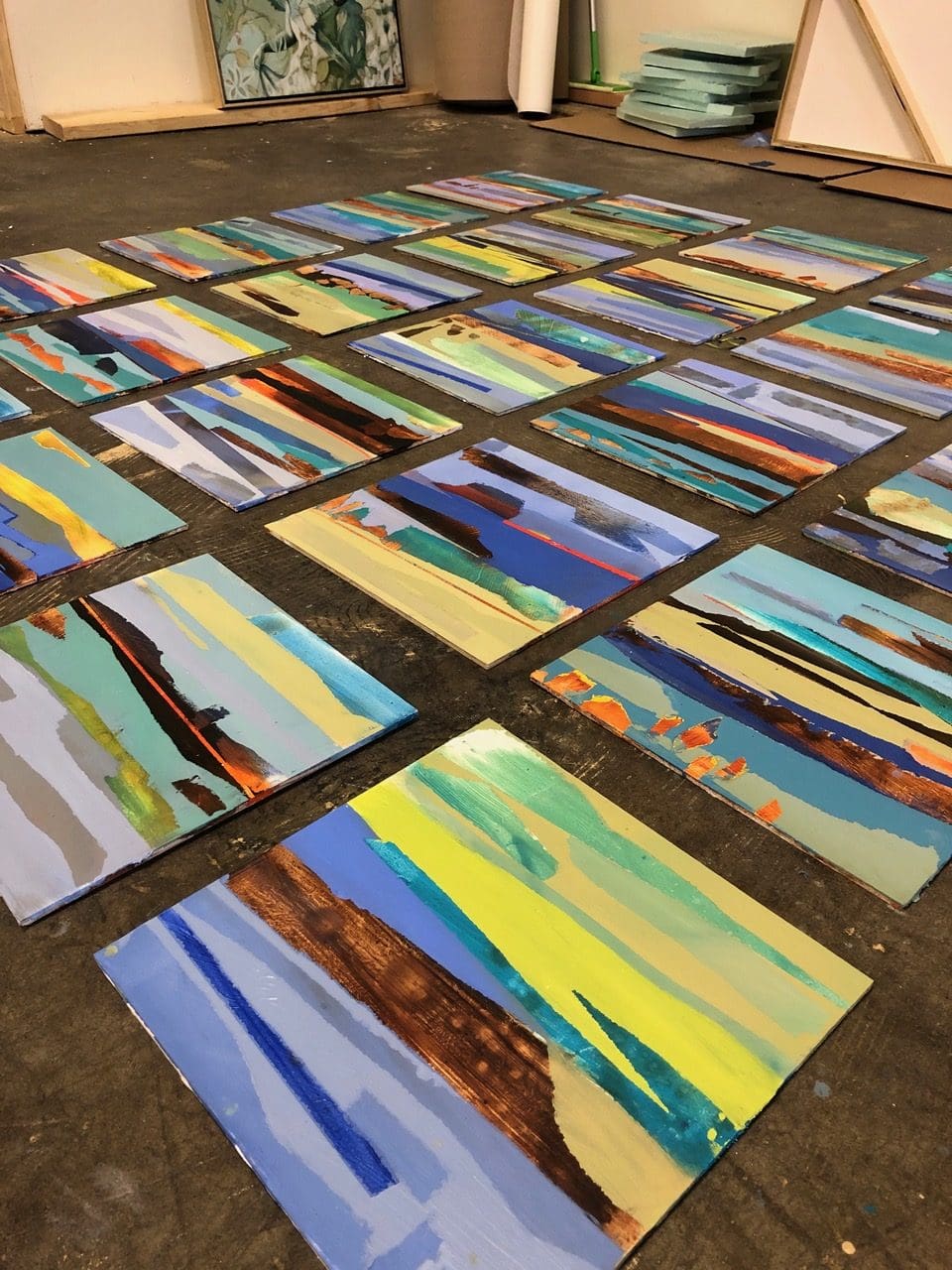Asheville-based artist Alicia Armstrong paints with a dream-like, enigmatic style, inviting you to explore the canvas and consider multiple interpretations. Layering oil paint, graphite, and charcoal, Armstrong creates ethereal silhouetted figures and richly-colored abstract landscapes. Her work often shows tactile glimpses into her process—paint drips, textures, and marks—conveying the imperfections and improvisations of life.
Take a look inside Armstrong’s spacious studio, and learn more about her creative philosophy.
.
.
“There’s history, there’s struggle, playfulness, beauty and there’s resolution. My work is often a simple expression of just being in life and all its ranges.”
Tell us about your background. When did you start creating art?
AA: I grew up in a lively creative household. Whilst both parents had careers in the medical field, my dad was always playing the piano and guitar, and welding something in the basement. My mother spent a lot of time collecting and refinishing antiques. They both worked with their hands and encouraged me to take extracurricular music and art lessons in elementary school. I played the violin and took drawing, painting, and printmaking classes throughout high-school. I eventually gave up the violin and pursued visual arts.
I actually started out as a ceramicist in the Fine Arts Department at University of North Carolina Asheville before I committed wholeheartedly to painting in oils. I think part of what drew me to painting was it seemed so challenging and fulfilling. I was able to create any world I wanted. I could tell a story or just create textures. The possibilities were endless and I knew I’d never get bored!
I chose oils because of the paint’s buttery consistency and slow drying time. This allows me to manipulate the oils by painting, wiping some off and painting more on extending the creative process.

.
Do you plan your process, or do you let chance take a role?
AA: It’s a little bit of both. Because I create figurative and abstract work, I begin a piece knowing which direction I’m working in. The abstract landscapes are more intuitive for sure. I like to pull formal elements such as line, space, shape, value, form, texture and color into my work which creates an energetic flow.
At the end of the day sometimes a piece is just isn’t holding up and I have let it go and completely sand it off! That’s part of the intuitive process which mirrors life. You go through life wanting it to go a certain way. When it doesn’t, you improvise, find resolution, humor, beauty and move on.
.

“I think part of what drew me to painting was it seemed so challenging and fulfilling. I was able to create any world I wanted. I could tell a story or just create textures. “
.
How would you describe your studio?
AA: My studio is almost the size of my entire house! It’s very open and light with high ceilings and there are several projects going on at one time. The wide open space allows more flow for me to work. I feel as though working in a spacious studio allows me to create more freely and more intuitively. I’ve had smaller spaces that left me feeling confined and cramped which is not a good space for the kind of work I want to make.
.
 .
.
.
What does a typical day in the studio look like for you?
AA: I get in the studio around 8:30am and meditate first thing every morning. Then I do a little writing and journalling. Sometimes I’ll put on a talk or music and then start painting. Usually there’s always work in process so I tend to start painting first and then work on packing or shipping work.
I paint until I feel spent, which may last a few hours. I’ve learned over the years not to force work out of myself. Once I feel like I’m done painting for the day, I need to walk away and focus my energies on administrative tasks. Forcing myself to paint creates resistance in my work, which is not a good thing!
.

“I paint until I feel spent, which may last a few hours. I’ve learned over the years not to force work out of myself.”
.
What role does color play in your work?
AA: Color plays a major role in my work. It creates different moods and evokes different sensations from the viewer. Monochromatic and neutrals are calming and sedate. More contrast like colors force the viewer to become alert and pay attention while vibrant colors feel super juicy! I don’t adhere to one color purpose because I have different moods.
Color placement is important to me when I’m creating work. I focus on how the colors look when next to each other—especially with the abstract landscapes. Because they’re abstract, the colors are what create the depth and space the viewers see. I love color play because there’s an infinite amount of combinations and placements so I never lose interest when I paint!
.
.
What do you hope viewers see in your work?
AA: I hope the viewer sees what is real and true in my work. There’s history, there’s struggle, playfulness, beauty and there’s resolution. My work is often a simple expression of just being in life and all its ranges. There’ll always be challenges, and there will always be the choices we have when facing difficult times. So, in effect, I hope the viewer sees hope and light in my work.
View our pieces by Armstrong online, or visit the gallery to experience her work in person.


